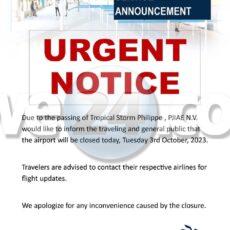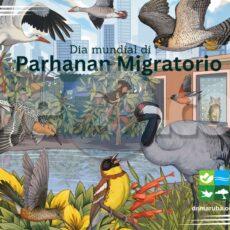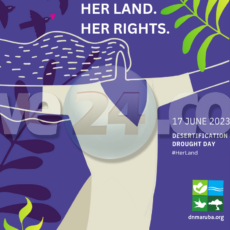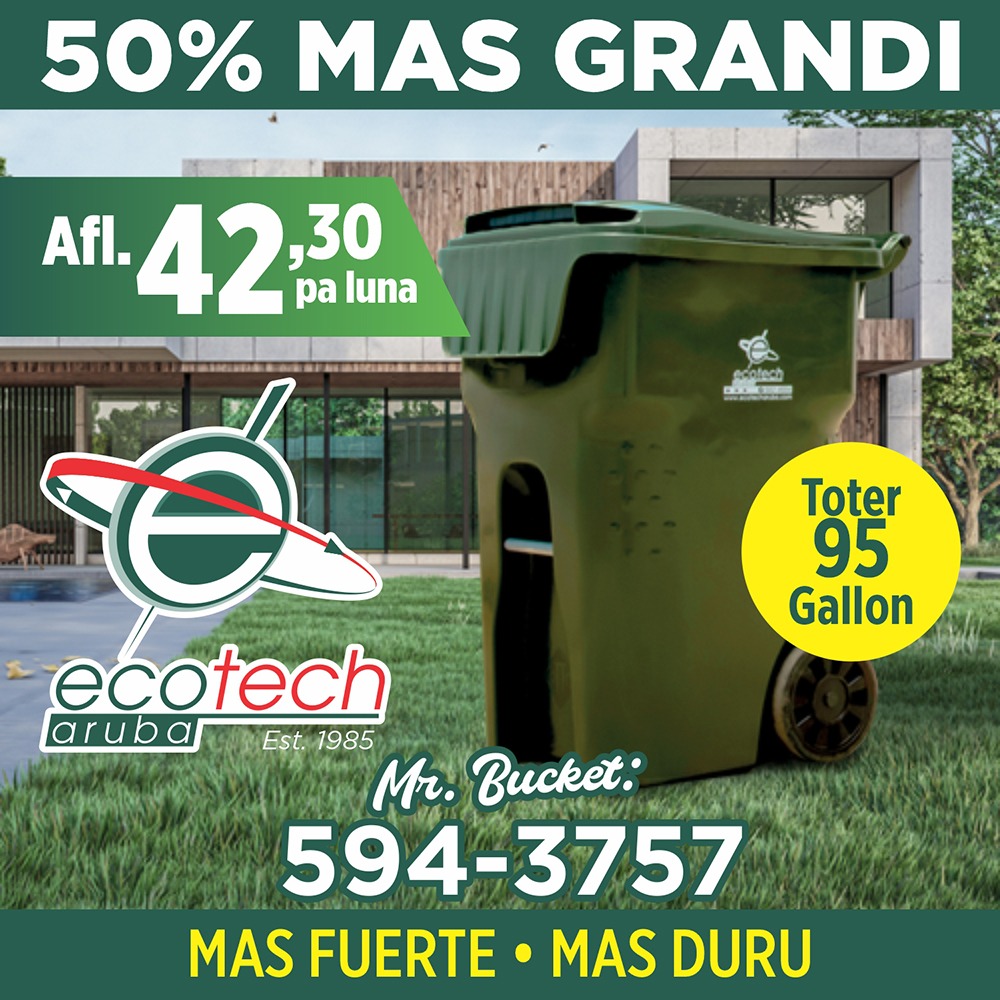
ORANJESTAD, ARUBA – Shoco (Athene cuniculariaarubensis) ta un di e simbolonan nacional di Aruba, e ta un especie endemico protegi pa ley cu ta existi solamente na Aruba y ta den peliger di extincion. Tin diferente factornan cu ta forma un menasa pa e populacion di Shoco, un di esakinan ta e perdidadi habitat natural door di urbanisacion cu ta crea e conflictoentre conservacion di naturalesa y crecemento socio-economico.Perdida di habitat natural di Shoco tin como consecuencia cu e populacion ta baha y ta yega na peliger di extincion.
Sigun analisis, pa nos por papia di un populacion di Shoco saludabel y sostenibel aki na Aruba, nos tin mester di alrededordi 300 par di Shoco cu ta reproduci. Pa motibo di scarcedad di cuminda y limite di espacio door di tera duro di e areanan diconservacion, ta bira dificil pa tin un populacion di 300 par di Shoco cu ta saludabel y sostenibel den e areanan aki, cual ta hacie nesecario pa integra e bida natural den e bida urbano cu tur su consecuencianan. Shoconan ta traha neishi primordialmenteden areanan habri cu tera moli pa asina nan por coba nan neishi, esaki sa pasa riba terenonan den construccion y cu mayoriabiaha ta wordo destrui despues. Naturalmente e ta faborabel pa evita, of minimalisa e impacto y of introduci accion di conservacion ora Shoconan traha neishi den areanan urbano of di construccion.
Creando neishi urbano artificial
Alededor di cinco aña pasa Fundacion Parke Nacional Aruba (FPNA), Aruba Birdlife Conservation (ABC) y The Global Owl Project a bini hunto pa diseña un proyecto di conservacion di Shoco. Cu añanan y cu exito acumula e proyecto a transformaden un Programa Nacional pa Conservacion di Shoco y ta basariba consientisacion, minimalisa menasanan riba habitat y creahabitat nobo door di introduci neishi artificial. Di e manera aki e partnernan di conservacion FPNA y ABC a instala mas di 70 neishi artificial rond di Aruba, pa por yega na un populacion di Shoco saludabel y sostenibel ta premira cu lo mester instala ronddi 500 neishi artificial.
Instalacion di neishi artificial ta un accion di conservacion cu ta tuma lugar den areanan urbano y di desaroyo, inclui sitio di construccion, mayoria biaha e ta un manera pa mitiga impacto. Pa prome biaha na Aruba, e partnernan di conservacion a wordoaserca proactivamente pa un desaroyador di e proyectoresidencial Bona Vista Hills pa for di inicio inclui accion di conservacion di Shoco den e planificacion di e proyecto pa conserva Shoconan riba e tereno. Esaki sigur ta un inciativa paaplaudi caminda cu contratistanan hunto cu e partnernan di conservacion a yega na un colaboracion pa inclui solucion basariba naturalesa den e proyecto residencial.
E team di FPNA a haci diferente analisis pa determina cuantoneishi di Shoco tin den e area pa asina crea un Proyecto di Compensacion di Habitat di Shoco na e proyecto residencial aki. Un total di dos neishi a wordo identifica riba e tereno, camindacu un neishi tabata tin un par di Shoco cu tabata bibando aden y un otro neishi cu ta duna indicacion cu tabata tin Shoco a bibaaden den e ultimo añanan. Den e Proyecto di Comensacion di Habitat di Shoco a instala cinco neishi artificial di Shoco den e retonde na final di cada caya. Esaki ta haci e prome proyectoresidencial cu a inlcui solucionan basa riba naturalesa den e diseño aki na Aruba, no ta un sorpresa cu recientemente e proyecto a atrae e atencion di Minister Arends di Transporte, Integridad, Naturalesa y Asuntonan di Adulto Mayor cu a bishitae proyecto pa presencia esaki pa su mes.
Abo tambe por yuda!
E partnernan di conservacion FPNA y ABC pa algun aña caba ta conserva y monitor e populacion di Shoco. Aunke ta kedaencurasha pa protecion di habitat natural di Shoco embes di compensacion, e partnernan di conservacion ta intermedia comoe ultimo solucion caminda cu ley, maneho y sistema di persmisonacional ta faya pa proteha e Shoco. Pa e Shoco por sobrevividen e area urbano ta importante pa nos minimalisa nos impactoriba dje. E impacto ta entre otro ora di maneha auto pa ta consciente di Shoco rond di bo pa asina evita dal nan. Mantenepushi y cacho leu di neishi di Shoco pa asina no coba esakinan y mata e babynan. Ora di off-road no uza e neishi como un rampapa bula riba dje, esaki lo spanta e Shoconan y duna nan stress y nan lo bandona e neishinan. Ta conciente riba e uzo di insecticida. Shoco ta come raton, cacalaca y tor, uzandoinsecticida ta haci cu e Shoco por muri indirectamente door di come un di e bestia of insectonan cu a wordo mata cu veneno.
Si bo mira un Shoco cu ta den peliger please tuma contacto cu Fundacion Parke Nacional Aruba of cu Aruba Birdlife Conservation pa asistencia.
Shoco Conservation: nature-based solutions through collaborative efforts
ORANJESTAD, ARUBA – The ‘Shoco’ or Aruba Burrowing Owl (Athene cunicularia arubensis) is one of the national symbols of Aruba. It is endemic only to Aruba and is an endangered species protected by law. The Shoco faces numerous threats, including land clearance and development, and urbanization into former natural Shoco habitat, resulting in conflicts between socio-economic activity and species conservation. With the decline of suitable Shoco habitat, the burrowing owl population will also continue to decline.
Research indicates that Aruba needs at least 300 breeding pairs of Shocos for a healthy and resilient Shoco population. Aruba’s remaining protected nature areas are limited in food supply and suitable nesting grounds and insufficient for 300 breeding pairs of Shoco, making it necessary for Shocos to live and reproduce in urban areas, which is not without its challenges. Shocos often make their nests in development sites and other urban areas with open spaces where there is ‘good sand’ to dig in. Shoco nests onconstruction sites often get destroyed during development activities. Prevention, threat minimization, and conservation measures are desired when land development displaces and negatively impacts resident owls and their nests, including in urban areas and construction sites.
Creating urban nesting sites
Approximately five years ago, Aruba Birdlife Conservation (ABC), Fundacion Parke Nacional Aruba (FPNA) and The Global Owl Project (GLOW), jointly set up a Shoco conservation project. After several years of accumulated success, the project transformed into a National Shoco Conservation Program, based on awareness, minimizing the impacts on Shoco’s and their habitats, and creating new Shoco nesting sites with artificial burrows. To this end, the local conservation partners FPNA and ABC have installed some 70 artificial burrows so far in suitable locations on the island, but their end goal is to place approximately 500 artificial burrows to ensure a viable Shoco population.
The placement of artificial burrows is a conservation action and a way of mitigating impacts on Shocos in urban and developing areas, including construction sites. Now, for the first time in Aruba, a housing project developer – Bona Vista Hills – has proactively approached the local conservation partners toincorporate Shoco conservation from the onset and help mitigate impacts of the project on the Shocos present on the terrain.
During site inspections carried out earlier this year at the Bona Vista Hills development project, ABC and FPNA, discovered two nesting sites: one where a Shoco pair was currently active and another site where another pair had been active in previous years. To compensate for the loss of Shoco nesting sites due to the development activities, five artificial Shoco nesting sites – each on a roundabout at the end of a street – were included into the housing development plan as a mitigation measure. This has resulted in this Shoco Habitat Compensation Project being the first of its kind for Aruba, due to the nature-based solutions incorporated into the project development. It is not surprising that this project has attracted the attention of Minister Arends of Transport, Integrity, Nature and Elderly Care, who recently visited the Bona Vista Hills to learn more first-hand.
You can help protect Shocos!
Local conservation partners ABC and FPNA have been conserving and monitoring the Shoco population for numerousyears already. Although they strongly state that natural habitat protection is better than compensation, they will step in as a last resort where the national laws, policies and permitting system fails to protect the Shoco. For Shocos to be able to survive in urban areas it is important to reduce risks from traffic collisionsby driving consciously when Shocos are nearby. Beware that Shocos may fly across roads last minute, so reducing your driving speed and being vigilant could help save a Shoco life.Also, keep dogs and cats well away from areas where Shocoslive. Beware of Shoco nests when riding your bike off-road; do not ride over them. This makes the birds nervous, and they may end up abandoning their nest. Also beware when using pesticides around your home and garden. The Shoco diet consists of small prey such as mice, cockroaches, and beetles. Numerous Shocos have already died by indirectly being poisoned through the food they eat.
If you see a Shoco in danger, please contact either FundacionParke Nacional Aruba or Aruba Birdlife Conservation for assistance.
Bescherming van de Shoco: samenwerking op basis van ‘nature-based solutions’
ORANJESTAD, ARUBA – De ‘Shoco’ of Arubaanse holenuil (Athene cunicularia arubensis) is een van de nationale symbolen van Aruba. Dit uiltje komt alleen voor op Aruba en is een bedreigde en beschermde diersoort. De Shoco heeft te lijden onder tal van bedreigingen, waaronder landontginning en -ontwikkeling in voormalige natuurlijke Shoco habitat, en verstedelijking, wat resulteert in conflicten tussen sociaaleconomische activiteiten en het behoud van de Shoco. Door het terugdringen van geschikt leefgebied zal de Shocopopulatie blijven afnemen.
Onderzoek wijst uit dat er minimaal 300 broedparen nodig zijnvoor een gezonde Shoco populatie. De beschermde natuurgebieden van Aruba zijn daarbij beperkt in voedselvoorziening en geschikte broedplaatsen, waardoor het noodzakelijk is voor de Shoco om uit te wijden naar stedelijke gebieden, wat niet zonder gevaar is. Shoco’s maken vaak hun nesten in stedelijke gebieden en op bouwterreinen met open ruimtes waar ‘goed zand’ aanwezig is om in te graven. Shoconesten op bouwplaatsen worden vaak vernietigd tijdens bouwactiviteiten. Preventie, het verminderen van de gevolgen,en soortenbehoudsmaatregelen, zijn gewenst wanneer landontwikkeling de uilen verdringt of negatief beïnvloedt, ook in stedelijke gebieden en op bouwplaatsen.
Het creëren van stedelijke nestgelegenheid
Ongeveer vijf jaar geleden hebben de Aruba Birdlife Conservation (ABC), Fundacion Parke Nacional Aruba (FPNA) en The Global Owl Project (GLOW) een gezamenlijk behoudsproject opgezet voor de Shoco. Na enkele succesvolle jaren, groeide het project uit tot een Nationaal Shoco Conservation Program, met als voornaamste doel bewustwording, het minimaliseren van de impact op Shoco’s en hun habitats, en het creëren van nieuwe nestgelegenheid door het plaatsen van kunstnesten. Inmiddels hebben de lokale natuurbeschermingspartners FPNA en ABC zo’n 70 kunstnesten geïnstalleerd op verschillende locaties op het eiland, maar hun einddoel is om ongeveer 500 kunstnesten te plaatsen.
Het plaatsen van kunstnesten is een manier om de bedreigingen van de Shoco in stedelijke en ontwikkelingsgebieden, inclusief bouwplaatsen, te verminderen. Nu is er voor het eerst op Aruba een projectontwikkelaar – Bona Vista Hills – die de lokale natuurbeschermingspartners proactief heeft benaderd om het behoud van de Shoco vanaf meet af aan mee te nemen in hun bouwproject, om zo de negatieve gevolgen van het bouwproject terug te dringen.
Tijdens inspecties ter plaatse, ontdekten ABC en FPNA twee nestplaatsen bij de Bona Vista Hills: een locatie waar momenteel een Shoco-paar actief is en nog een locatie waar een ander paartje in de voorgaande jaren actief was. Om het verlies van de Shoco nesten ten gevolge van de bouwactiviteiten te compenseren, zijn vervolgens vijf kunstmatige Shoco-nestplaatsen – elk op een rotonde aan het einde van een straat – als mitigerende maatregel in het woningbouwplan opgenomen. Dit maakt dat dit het eerste Shoco Habitat Compensation Project in zijn soort is voor Aruba, vanwege de op de natuur gebaseerde oplossingselementen die in het bouwproject zijn verwerkt. Het is niet verwonderlijk dat dit de aandacht heeft getrokken van minister Arends van Transport, Integriteit, Natuur en Ouderenzaken, die onlangs de Bona Vista Hills bezocht om uit eerste hand meer te weten te komen.
Ook u kunt helpen om de Shoco te beschermen!
De lokale natuurbeschermingspartners ABC en FPNA monitorende Shoco populatie al vele jaren. Hoewel ze nadrukkelijkadviseren dat de bescherming van de natuurlijke habitat van de Shoco beter is dan compenseren, zullen ze als laatste redmiddel ingrijpen wanneer de nationale wetten, -beleid en het vergunningenstelsel er niet in slaagt de Shoco te beschermen. Om de overlevingskansen van de Shoco in stedelijke gebieden te vergroten, is het belangrijk om verkeersongevallen te verminderen door vooral waakzaam en rustig te rijden bij aanwezigheid van Shoco’s. Houdt honden en katten ver uit de buurt van Shoco’s. Pas op voor Shoco nesten wanneer u ‘off-road’ fietst; fiets niet over Shoco nesten heen. Dit maakt de vogels erg nerveus en ze kunnen uiteindelijk hun nest verlaten. Pas op bij het gebruik van pesticiden rond uw huis en in uw tuin. Het Shoco dieet bestaat uit kleine prooien zoals muizen, kakkerlakken en kevers. Door het bestrijden van ongedierte met gifstoffen zijn al talloze Shoco’s gestorven door indirecte vergiftiging door het voedsel dat ze aten.
Als u een Shoco in gevaar ziet, neem dan direct contact op met Fundacion Parke Nacional Aruba of Aruba Birdlife Conservation.

















